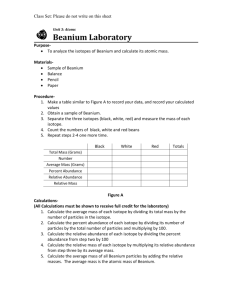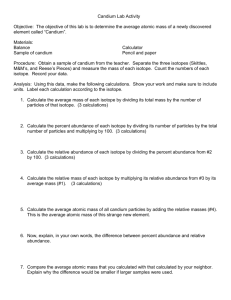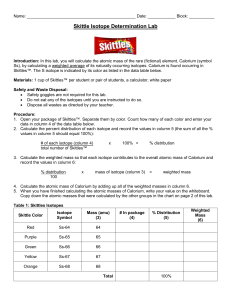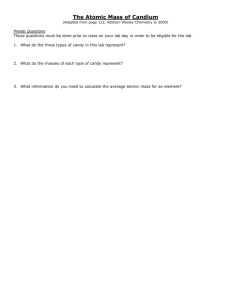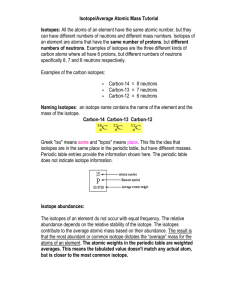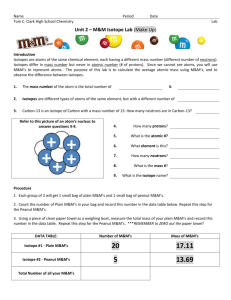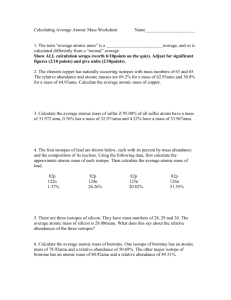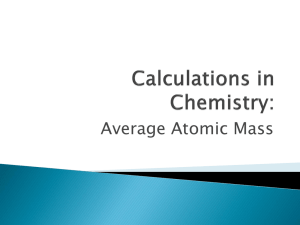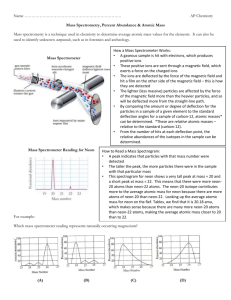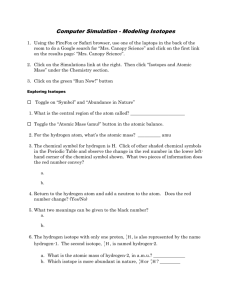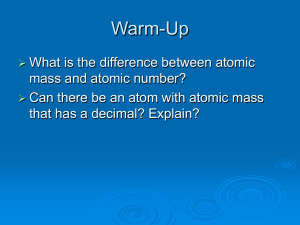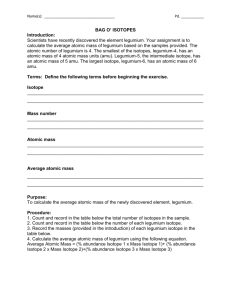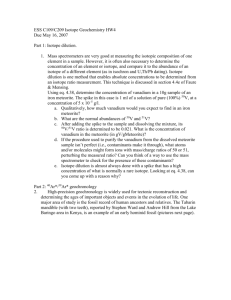ISOTOPES AND ATOMIC MASS
advertisement
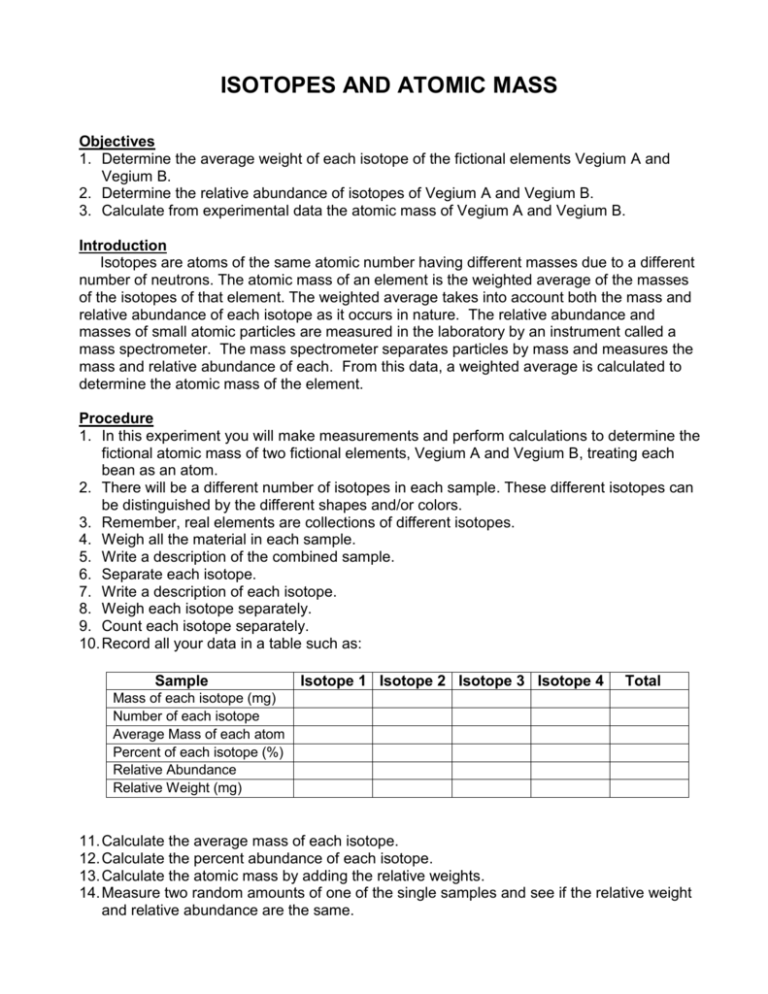
ISOTOPES AND ATOMIC MASS Objectives 1. Determine the average weight of each isotope of the fictional elements Vegium A and Vegium B. 2. Determine the relative abundance of isotopes of Vegium A and Vegium B. 3. Calculate from experimental data the atomic mass of Vegium A and Vegium B. Introduction Isotopes are atoms of the same atomic number having different masses due to a different number of neutrons. The atomic mass of an element is the weighted average of the masses of the isotopes of that element. The weighted average takes into account both the mass and relative abundance of each isotope as it occurs in nature. The relative abundance and masses of small atomic particles are measured in the laboratory by an instrument called a mass spectrometer. The mass spectrometer separates particles by mass and measures the mass and relative abundance of each. From this data, a weighted average is calculated to determine the atomic mass of the element. Procedure 1. In this experiment you will make measurements and perform calculations to determine the fictional atomic mass of two fictional elements, Vegium A and Vegium B, treating each bean as an atom. 2. There will be a different number of isotopes in each sample. These different isotopes can be distinguished by the different shapes and/or colors. 3. Remember, real elements are collections of different isotopes. 4. Weigh all the material in each sample. 5. Write a description of the combined sample. 6. Separate each isotope. 7. Write a description of each isotope. 8. Weigh each isotope separately. 9. Count each isotope separately. 10. Record all your data in a table such as: Sample Isotope 1 Isotope 2 Isotope 3 Isotope 4 Total Mass of each isotope (mg) Number of each isotope Average Mass of each atom Percent of each isotope (%) Relative Abundance Relative Weight (mg) 11. Calculate the average mass of each isotope. 12. Calculate the percent abundance of each isotope. 13. Calculate the atomic mass by adding the relative weights. 14. Measure two random amounts of one of the single samples and see if the relative weight and relative abundance are the same. Post Lab Questions 1. Which of the data in the table must be measured and which must be calculated? 2. In all except step 11, the “Total” is calculated by adding the numbers across each row. Step 11 is an exception because it does not take into account the fact that there are different numbers of each isotope. Rather then add across, calculate this “Total” number in the same way you calculated the other numbers in row #3 of the table. 3. What is the difference between percent and relative abundance? 4. What is the result when you total the individual percentages? What is the total of the individual relative abundances? 5. The percent of each isotope tells you how many of each kind of isotope there are in every 100 particles. What does the relative abundance tell you? 6. Compare the total values of row #3 and row #6 in your table. 7. Why can you not calculate the atomic masses the way the total is calculated for row #3? 8. Collect the data of Vegium A or Vegium B from two other work groups and compare your answers to theirs. 9. What are the errors between your data and that of the other two work groups? 10. What are the sources of the errors? 11. Which measurement/calculation do you think is correct and why? 12. How do you think a scientist would approach this problem having an unknown sample and a mass spectrometer? 13. How do you think the scientist validates his/her data?


